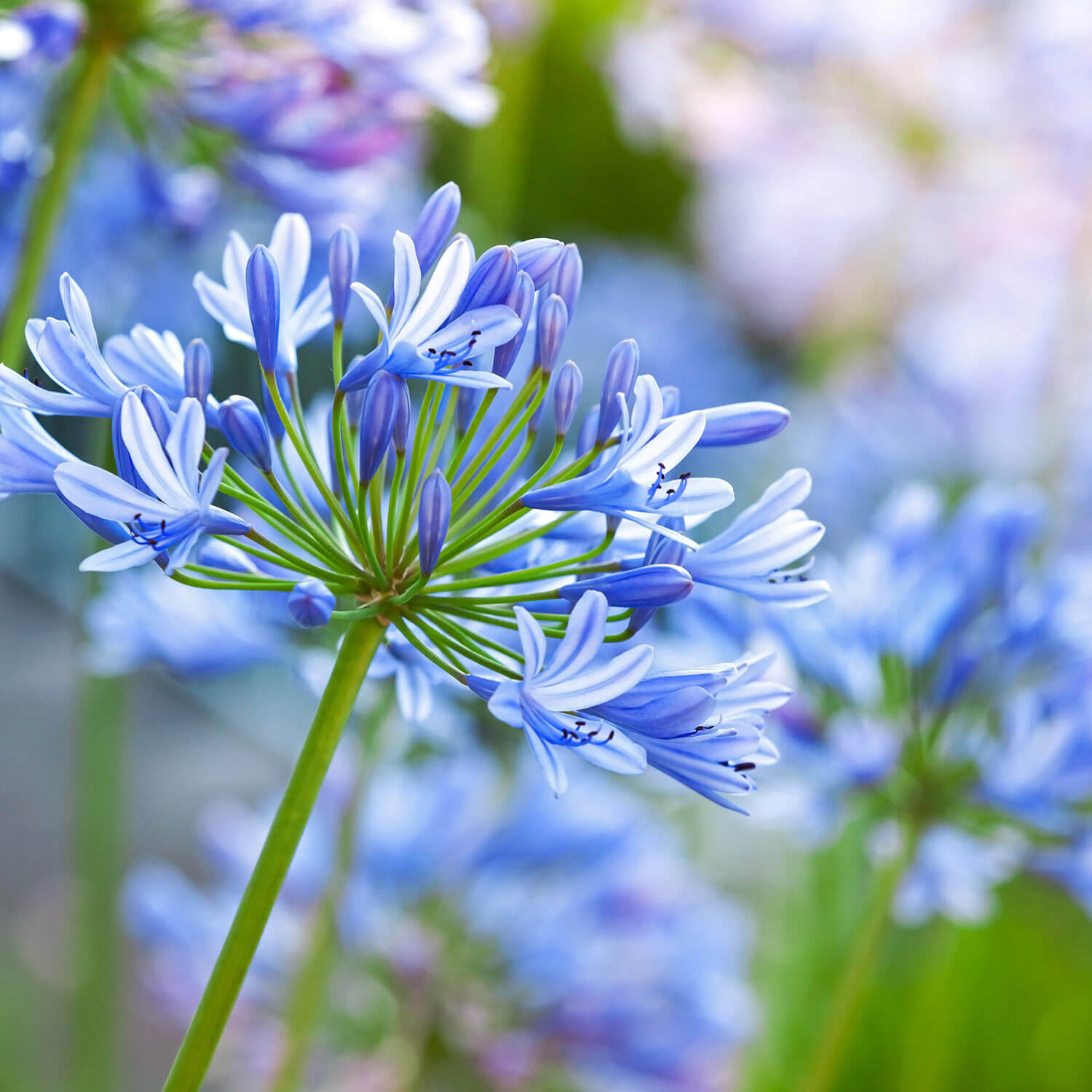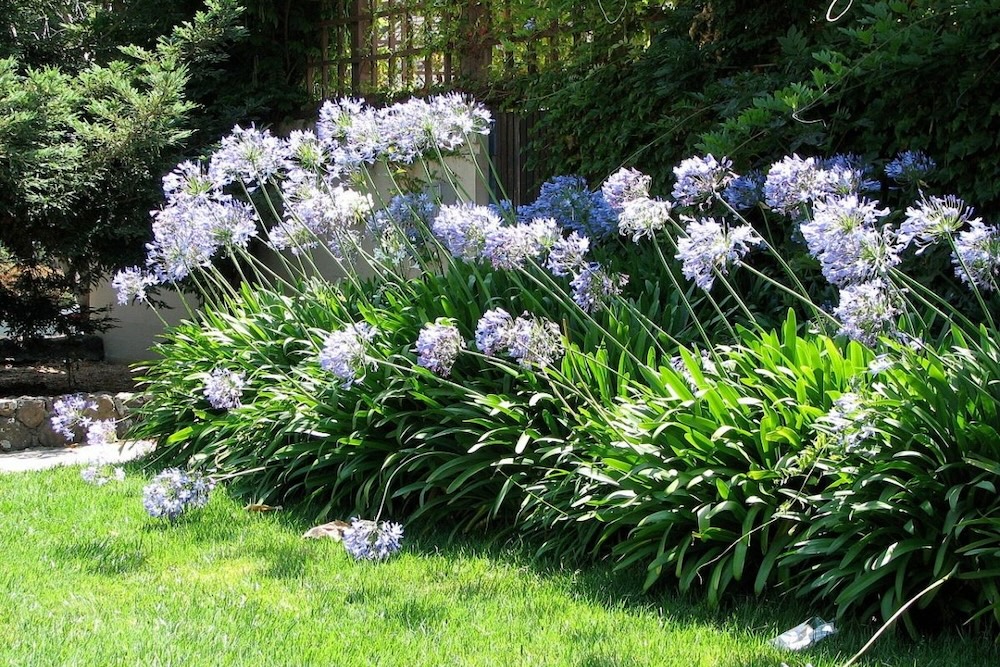Common Agapanthus Problems and Just How to Address Them
Understanding the Art of Agapanthus Treatment: Necessary Steps for Healthy And Balanced Development and Dynamic Flowers
In the realm of cultivation, the cultivation of agapanthus stands as a rewarding venture for those who seek to nurture these elegant blooming plants. From choosing the appropriate range to mastering trimming methods, the journey in the direction of cultivating thriving agapanthus plants is multifaceted and holds the crucial to unlocking the full possibility of these agricultural treasures.

Choosing the Right Agapanthus Selection

When selecting the appropriate Agapanthus selection for your garden, consider elements such as environment suitability, blossom shade, and growth habit. Agapanthus, frequently called Lily of the Nile or African lily, comes in a selection of colors ranging from shades of blue and purple to white. Pick a bloom shade that matches your existing yard palette to create an unified landscape. Additionally, take into consideration the climate in your area to ensure the Agapanthus range you pick can thrive in your particular conditions. Some varieties are a lot more forgiving of cool temperature levels, while others prefer warmer climates. Comprehending the growth practice of various Agapanthus selections is vital for correct placement within your garden. Some ranges have a clumping development routine, ideal for boundaries or containers, while others have an even more spreading nature, ideal for ground cover or mass plantings. By thoroughly evaluating these variables, you can select the excellent Agapanthus range to boost the elegance of your garden.
Suitable Planting Conditions
Thinking about the ideal ecological requirements is essential for effective Agapanthus cultivation. Agapanthus plants are delicate to cool temperatures and must be shielded from frost during winter season months.
To guarantee healthy and balanced growth and dynamic blossoms, plant Agapanthus bulbs at a deepness of regarding 2-4 inches and area them 8-12 inches apart. Mulching around the base of the plants assists keep wetness and subdues weed growth.
Watering and Fertilizing Tips
Preserving correct moisture levels and offering necessary nutrients are key elements in the treatment program for Agapanthus plants. When it comes to sprinkling Agapanthus, it is critical to strike a balance. These plants favor constantly wet dirt yet are prone to root rot if overwatered.
Feeding Agapanthus is necessary for advertising healthy growth and respected blossoms. Apply a balanced plant food, such as a 10-10-10 formula, in the very early spring as new development arises. Repeat this application every 6-8 weeks throughout the growing season. Stay clear of extreme fertilizing, as it can result in lavish foliage at the cost of blossoms. Constantly adhere to the maker's directions for correct dilution and application methods. By following these watering and feeding suggestions, you can ensure your Agapanthus plants grow and generate vivid, resilient blooms.
Trimming Methods for Agapanthus
Pruning Agapanthus plants at the ideal times and with proper methods is essential for maintaining their health and wellness and advertising optimal growth and flowering. The optimal time to prune Agapanthus is in late winter season or very early spring prior to new growth arises.
For flowered stems, wait up until the blooms have withered and after that cut them back use this link to the base. This not only cleans up the plant's look but also encourages the advancement of new flower buds. Deadheading invested blossoms can additionally reroute the plant's energy into generating even more blossoms instead of establishing seeds. Nevertheless, if you wish to accumulate seeds for proliferation, leave some flowers to fully grown and completely dry on the plant.
Keep in mind to use tidy, sharp tools to make exact cuts and lower the danger of presenting diseases. Agapanthus. Regular trimming will certainly help maintain your Agapanthus looking healthy and neat while guaranteeing a plentiful display screen of gorgeous flowers
Dealing With Common Bugs and Conditions
After making certain correct pruning methods for Agapanthus, it is necessary to resolve typical pests and conditions that can influence the health and wellness and vitality of these plants. One common insect that impacts Agapanthus is the Agapanthus gall midge.
Another typical problem is fungal fallen leave place, which provides as dark lesions on the leaves. To avoid fungal illness, make sure good air blood circulation around the plants, stay clear of above watering, and eliminate any type of contaminated fallen leaves quickly. In addition, Agapanthus plants can experience root rot if they are grown in poorly draining soil. To stop this, plant Agapanthus in well-draining soil and stay clear of overwatering. By being cautious and taking timely action versus diseases and pests, you can aid your Agapanthus plants flourish and generate dynamic blossoms.

Verdict
To conclude, understanding the art of agapanthus treatment includes picking the appropriate selection, giving why not look here excellent planting conditions, proper watering and fertilizing, appropriate trimming techniques, and addressing usual bugs and illness. By complying with these necessary steps, you can make sure healthy development and lively flowers for your agapanthus plants. Bear in mind to consistently monitor and preserve your plants to advertise their total well-being and durability.
To ensure healthy development and vibrant blossoms, plant Agapanthus light bulbs at a deepness of regarding 2-4 inches and area them 8-12 inches apart. By adhering to these watering and feeding pointers, you can ensure your Agapanthus plants flourish and generate dynamic, long-lasting blooms.
One common pest that influences Agapanthus is the Agapanthus gall midget. Furthermore, Agapanthus plants can experience from root rot great site if they are grown in inadequately draining pipes dirt. By adhering to these crucial steps, you can make sure healthy and balanced development and vivid blooms for your agapanthus plants.